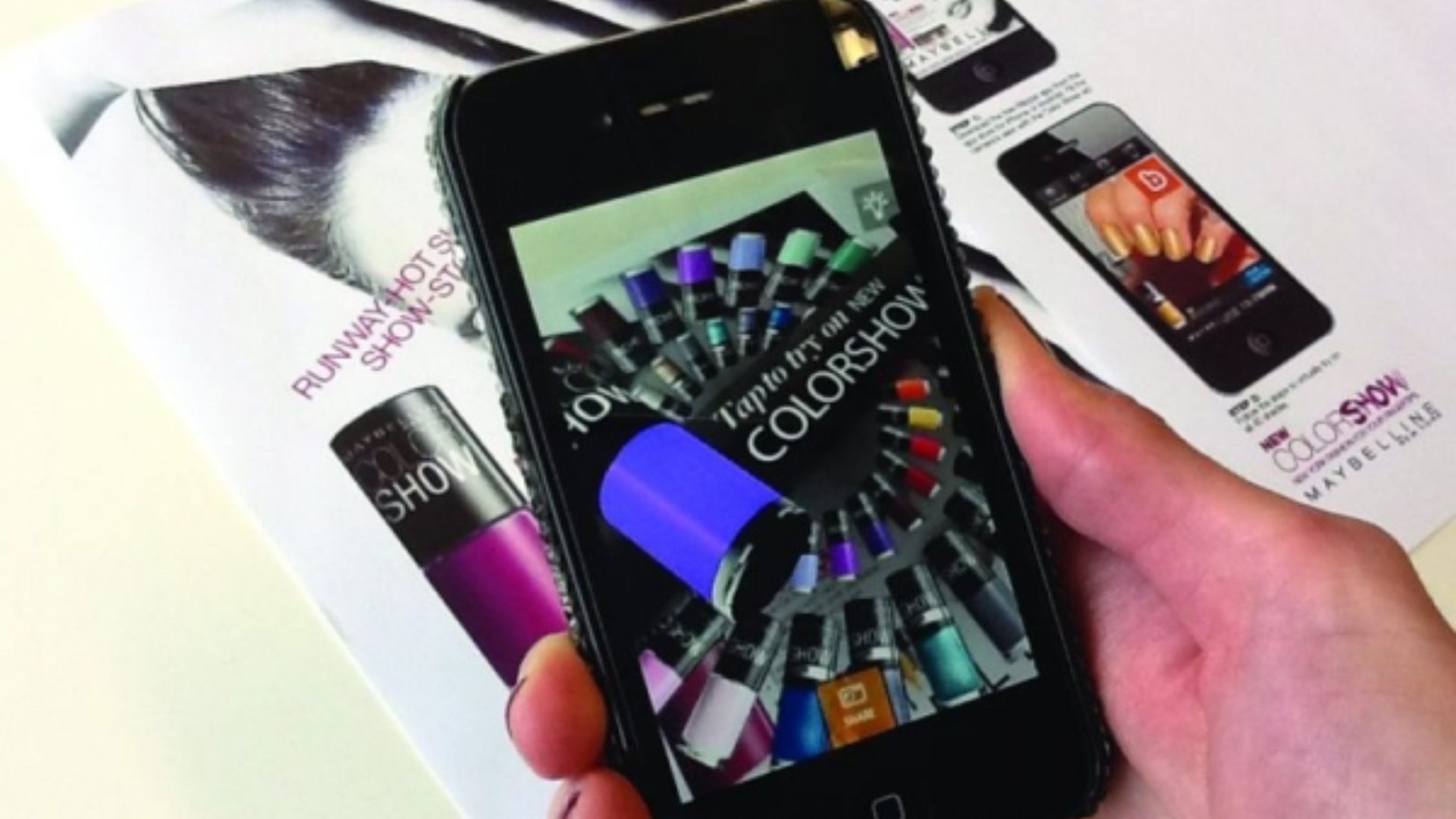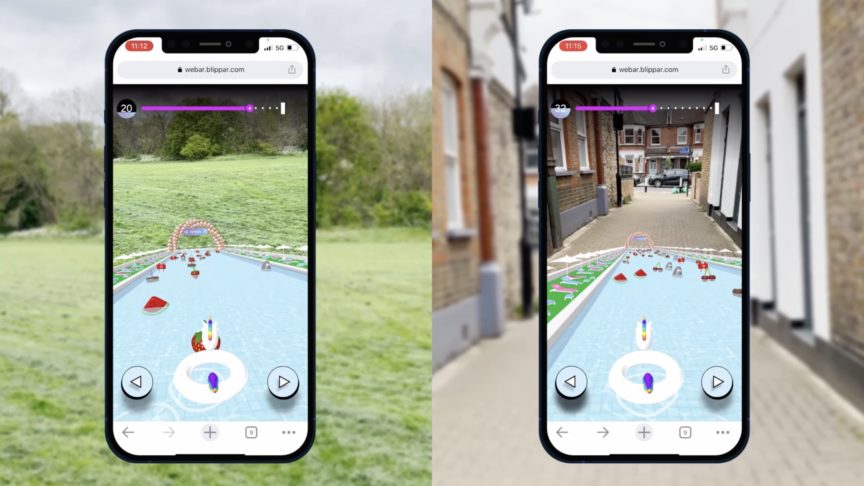Augmented Reality Finally Starts to Gain Traction
March 6, 2014
Augmented Reality Finally Starts to Gain Traction

Tech start-ups like Blippar, Layar and Daqri are testing new marketing features enabled by consumer mobile devices. They're using augmented reality technology that enables a smartphone or tablet to recognize real live objects and then activate video or graphics that relate to the object. Katherine Rosman reports.
Augmented reality—a technology that enables mobile devices to recognize live objects and then activate video or graphics—has been stuck for years in new-tech purgatory, where ideas loll in the hope of finding mainstream applications.
That may be changing, at least in the eyes of marketers, print publishers and retailers, who are testing new ways to promote their brands on ever-present mobile devices.
Startups like Blippar, Layar and Daqri are beginning to make inroads, offering technology that lets people point their smartphones or tablets at objects—whether a can of soda, a magazine cover or an in-store display—and then watch video or high-tech graphics unfurl on top of the objects on screen.
AR remains clunky at times, and there is little research showing that layered content translates to sales and customer loyalty. Many advertisers are reluctant to talk, out of concern for revealing their strategy. But the mass adoption of smartphones and tablets and the promise of wearable devices is helping spur interest in the technology.

Sometimes referred to as "interactive print," AR is finding its greatest consumer-market ally in the print magazine industry. Some AR programs activate content on tablets that can be viewed only as long as the device hovers over certain print, making the print an essential element of the experience.
In publications like Elle, readers can focus a tablet on a film review and watch as the movie's promotional trailer begins to play on the device's screen. When an AR-enabled app from Maxim magazine zeroes in on the magazine's cover model, a video from the photo shoot begins to play. An interactive ad from CoverGirl in the March issue of Cosmopolitan magazine allows readers to "try on" a makeup product via an AR app to find the right shade. The makeup can then be purchased directly through the app.
"Consumers are increasingly using their phones to navigate the physical world, and magazines are a part of that," says David Carey, the president of Hearst Magazines which publishes Cosmo, Elle and Esquire, each page of which is interactive.
Some advertisers also see promise in AR, saying the technology has the ability to captivate people with products and compel them to watch branded content intently. Consumer brands like Heinz and Pepsi have worked with Blippar to test the apps on their products.
But industry analysts caution that AR's success depends on people finding it easy to use and recognizing value in interacting with videos and graphics. "If the content isn't brining additional value, then mainstream consumers [aren't] going to use it twice," says Tuong Nguyen, a principal with research firm Gartner.Using the Blippar app, a consumer can point a mobile device at one of 20 million cans of Pepsi, PepsiCo Inc.'s flagship product, and unlock interactive content from the National Football League, including recipes and a ticket sweepstakes for next year's Super Bowl.
Mr. Nyuygen says he expects great growth in the industrial realm, where AR can sometimes help mechanics fix equipment and warehouse operators find and keep track of inventory. "If something makes someone's job easier," he says, "the adoption will be quick."
AR companies are trying to make it easier for creative executives to make the sort of content that will grab consumers. In the past few weeks, both Daqri and Blippar have released products that can be licensed directly by brands and advertising agencies to build and activate their own AR experiences. Layar has had such a product on the market for nearly two years.
For more innovative campaigns, brands are working directly with the technology companies. For the North American International Auto Show in Detroit earlier this year,Ford Motor Co. debuted its first AR experience to promote its vehicles.
Attendees were prompted to download a special "Ford 4D" app and to look through the app at a graphic affixed to the cars. The app recognized the graphic and launched imagery on the smartphone that made the car appear as though it was coming off the screen in real-life dimension. For the Escape sport-utility vehicle, users could swipe the screen to open the back of the vehicle and activate a virtual version of it filling up with simulated animated soccer balls.
Ford has used the 4D display at subsequent auto shows in Toronto and Washington, and plans to do so again at the auto show in New York in April, says David Tillapaugh, its auto-show operations manager. Mr. Tillapaugh said it is too early to tell if more consumers chose Ford for having interacted with the cars in 4D, and he declined to cite the cost of the promotion. But he says consumers at the auto shows have been very engaged with the 4D display. "It has a lot of stickiness," he says.
Ford's 4D experience was created by Daqri, a Los Angeles company founded in 2010 by Brian Mullins, a graduate of the U.S. Merchant Marine Academy who later worked for the U.S. Transportation Department to help develop technology to help aircraft carriers float into docks seamlessly.
Last month, 325 representatives of more than 200 companies attended a two-day convention at Daqri's headquarters to learn more about technology Daqri is building for universities, manufacturers and entertainment companies.
The marketing of a marketing product is a focus of all AR companies because the success of the technology's adoption hinges on brands helping to promote the campaign. Last December, Kohl's Corp. promoted holiday items on an AR-enabled seven-page ad that unfolded from the cover of Food Network Magazine. But nowhere on the ad were consumers told to download an app and hover it over the print ad to experience multimedia features.
Lisa Hu, a spokesperson for Blippar, says "user education" is paramount in building campaigns, as some companies may already have created the ads before making them interactive or limit the space needed for instructions.
Consumer brands experimenting with AR are reluctant to discuss if the technology is helping to increase sales. Matthew Szymczyk, chief executive of Zugara, a virtual dressing-room technology that is AR-powered and aims to help digital fashion shoppers, says the technology is too young to judge its efficacy.
"Some people say AR is a gimmick, but social media was initially considered a gimmick too," he says.
- Written by Katherine Rosman, March 3rd 2014
Watch the video here.

